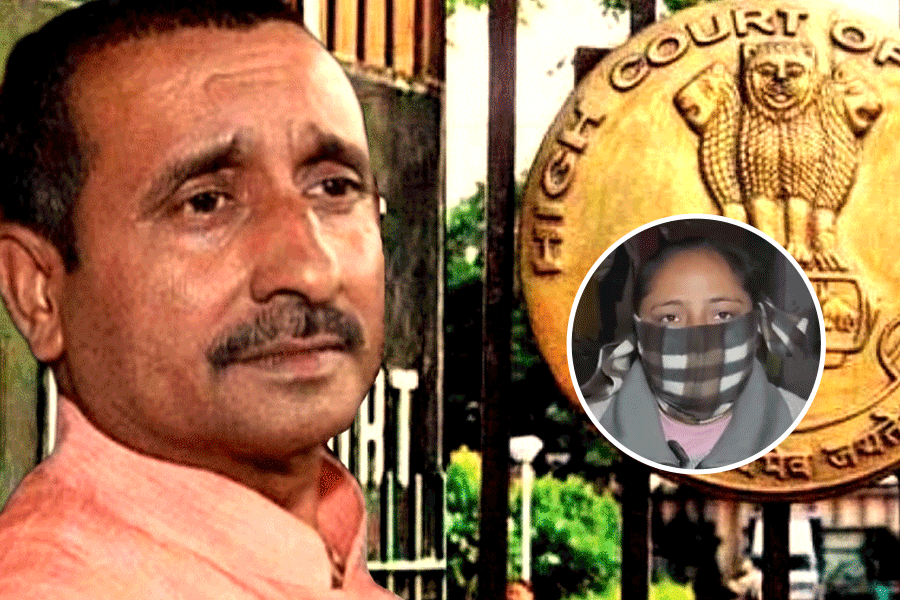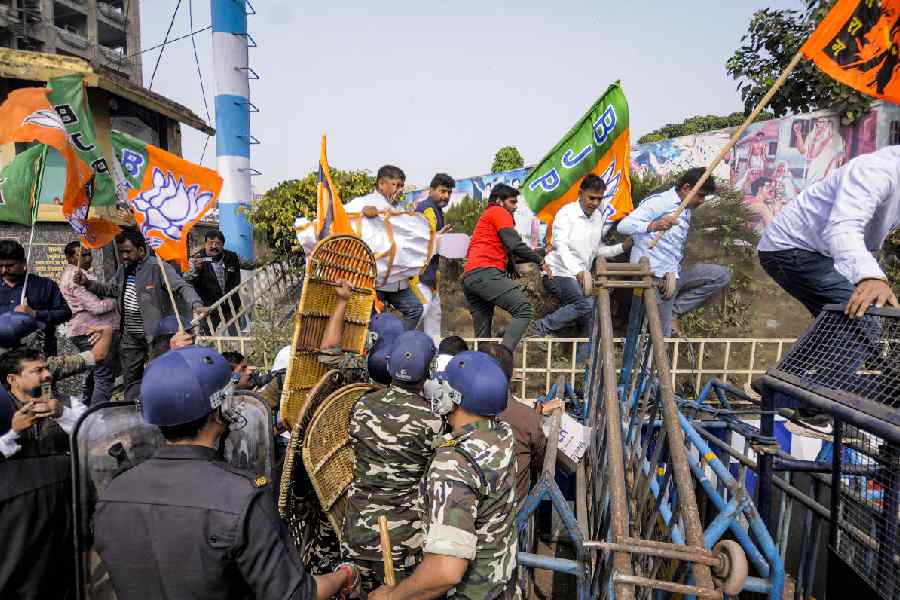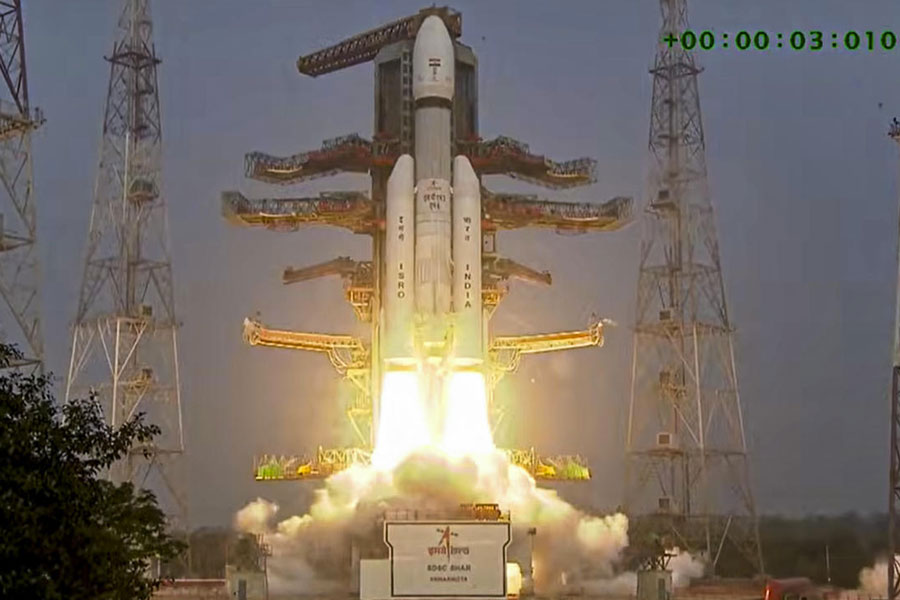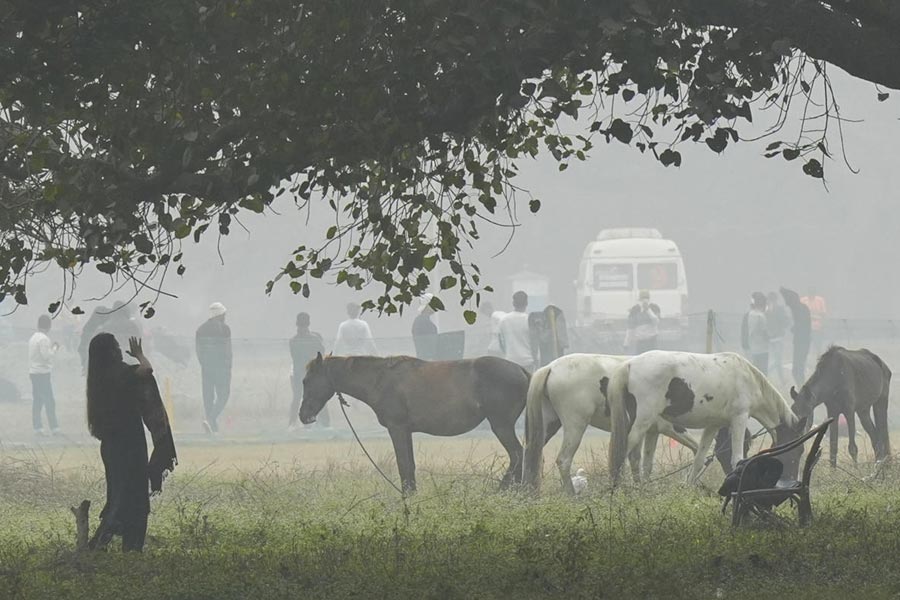 |
| The entrance to Sanjeeva Town off Rajarhat; (above) The Telegraph report highlighting the government’s haste in approving the project after opposing it in court |
On September 14, The Telegraph had published a report detailing how the state government had approved overnight Sanjeeva Town, a residential complex being built by Vedic Village owner Raj K. Modi, after pursuing a case against it till the Supreme Court. The government’s initial opposition was based on the fact that the project was coming up on the East Calcutta Wetlands, a Ramsar site where construction was banned by a high court order in 1993. A Metro primer on the Wetlands
● What are the East Calcutta Wetlands?
More than 300 water bodies and vast agricultural tracts spread across 12,500 hectares — adjacent to Salt Lake and Rajarhat — comprise the East Calcutta Wetlands. The water bodies, mostly privately owned, are used for pisciculture. Records suggest some of the water bodies had come up almost 80 years ago.
● Why are the Wetlands so vital for the city?
The Wetlands can be called the city’s kidneys. Around 250 million litres of the city’s effluent are drained daily to the Wetlands, where the waste is naturally — and for free — treated and made fit for fishery and agriculture.
Experts say a plant to treat such a huge volume of effluent would cost Rs 500 crore and another Rs 100 crore every year for upkeep. The water bodies and agricultural fields also provide employment to a few thousand people.
● What was the 1993 high court ruling?
The court, acting on a petition by PUBLIC, an NGO, declared the Wetlands a waste water recycling region and banned any change in its use and character. Which means no construction could be carried out on the Wetlands.
● What will happen if construction is allowed on the Wetlands?
As the water bodies get filled up, the Wetlands would lose their ability to hold and treat effluent. Add-on benefits such as fishery and agriculture will also suffer, affecting the livelihood of several thousands.
● When and why were the East Calcutta Wetlands declared a Ramsar site?
India is a signatory to the Ramsar treaty — named after the Iranian city where it was formalised — which lists prominent wetlands across the world and lays out a framework for their conservation and “wise use” of their resources.
The East Calcutta Wetlands were included in the list following a plea from the state government. According to the Ramsar declaration, a wetland can be taken off the list if there is any change in its character or if a permanent structure comes up on it.
● Why was the Wetlands Authority formed?
The East Calcutta Wetlands Management Authority, chaired by the chief secretary, was set up in 2006 to preserve the water bodies and ensure they are not gobbled up by land sharks.
The 19-member authority has been entrusted with, among other jobs, demarcating the boundaries of the East Calcutta Wetlands and taking “measures to stop, undo and prevent any unauthorised development”.
● Why was the deal with Sanjeeva Town a “green murder”?
The deal has emboldened all land sharks to think that the Wetlands are up for grabs and the authority will regularise all violations with “post facto approvals” if the right strings can be pulled.
● What are the other instances of norm violation?
The environment department has filed around 200 complaints about violation but police have done precious little. Most of the alleged violators are private promoters though the civic body and the fishery department, too, are on the list.
The authority, on most occasions, regularised the violations. Take for instance the cluster of marble outfits and the car servicing centres behind the Energy Education Park and on the fringes along Basanti Road.
These were regularised despite a court order to shift them out of the Wetlands. A technical college and two residential estates, ordered by the court to be demolished, were saved after the authority reversed its stand.
— JAYANTA BASU










